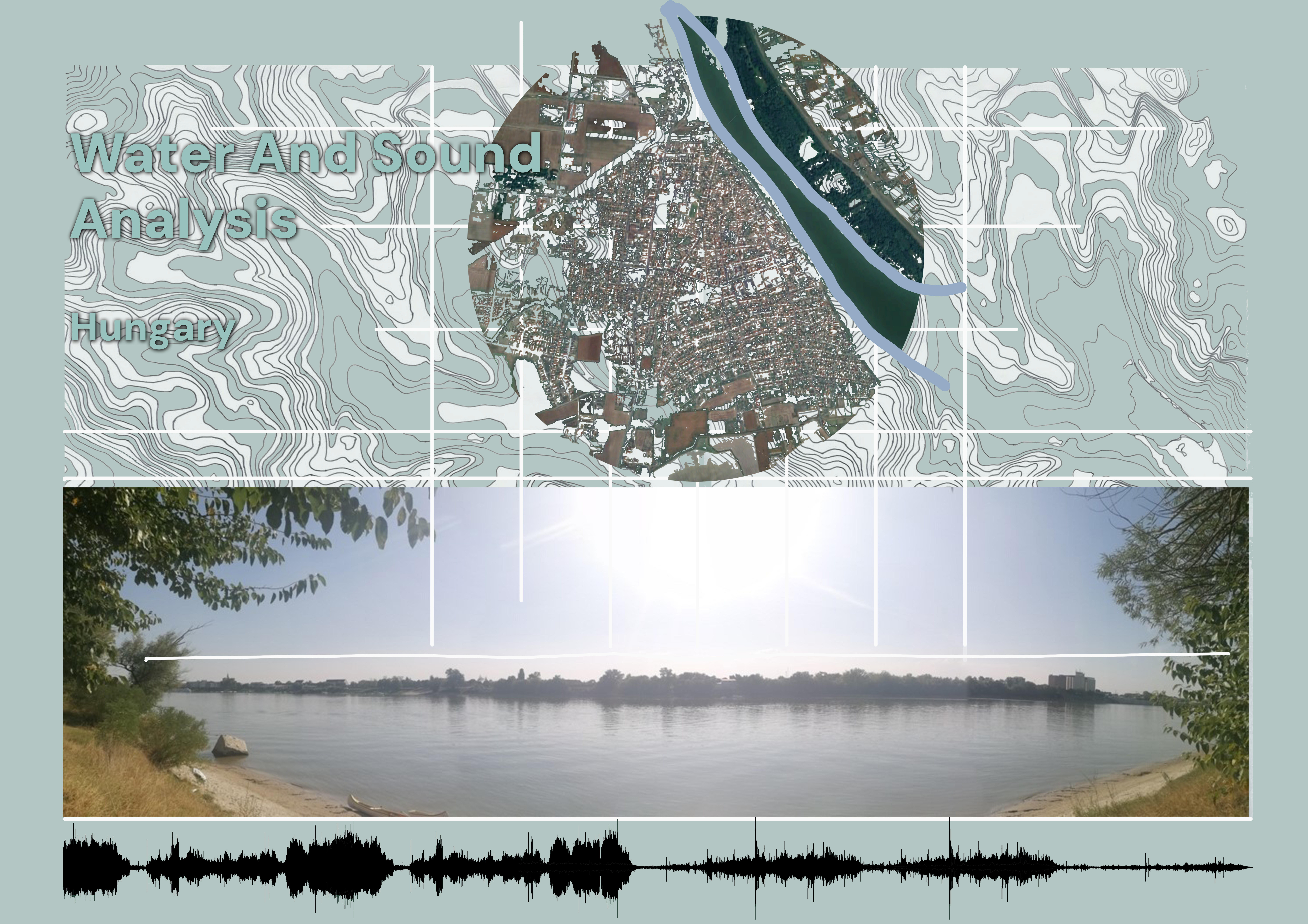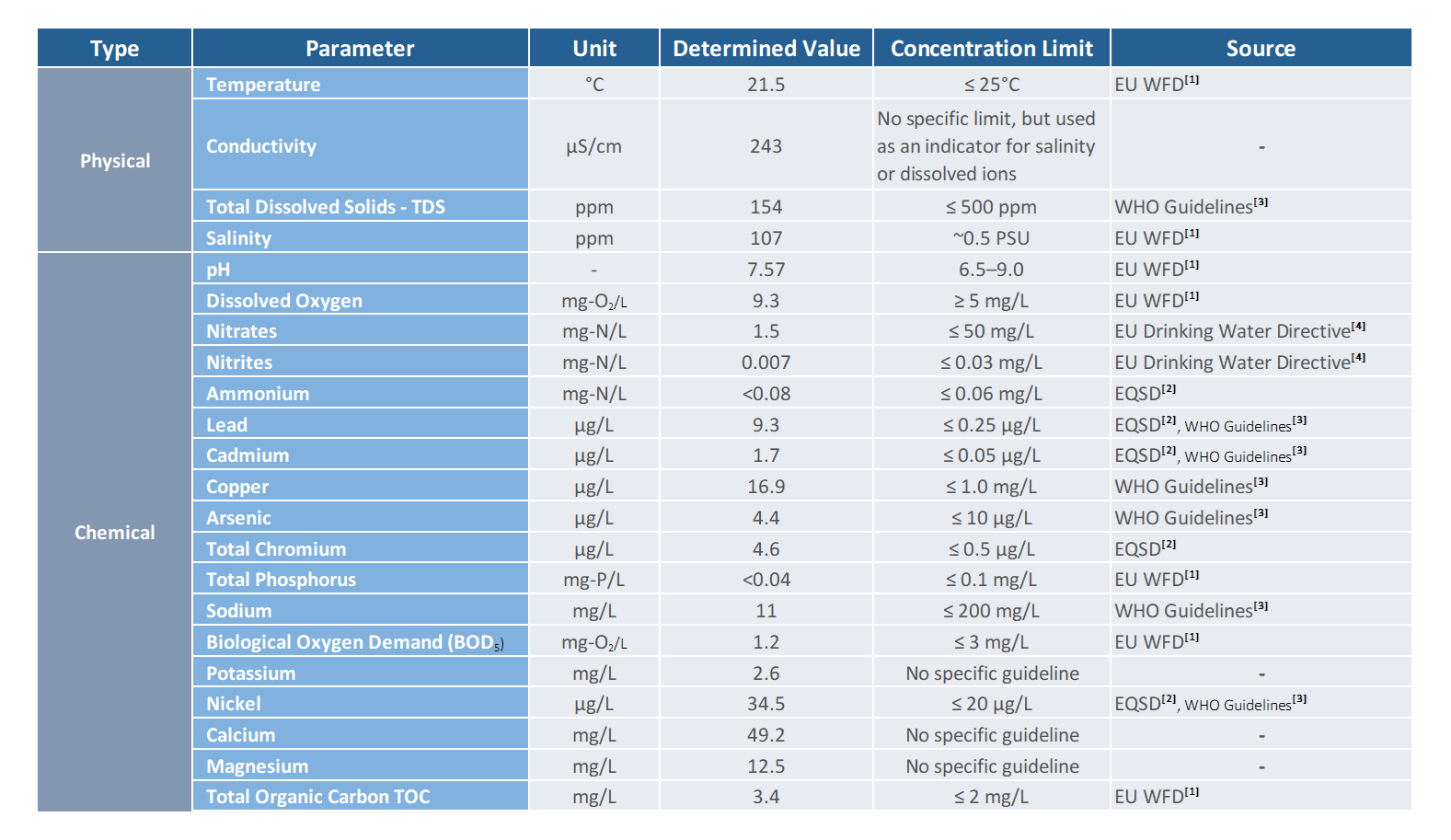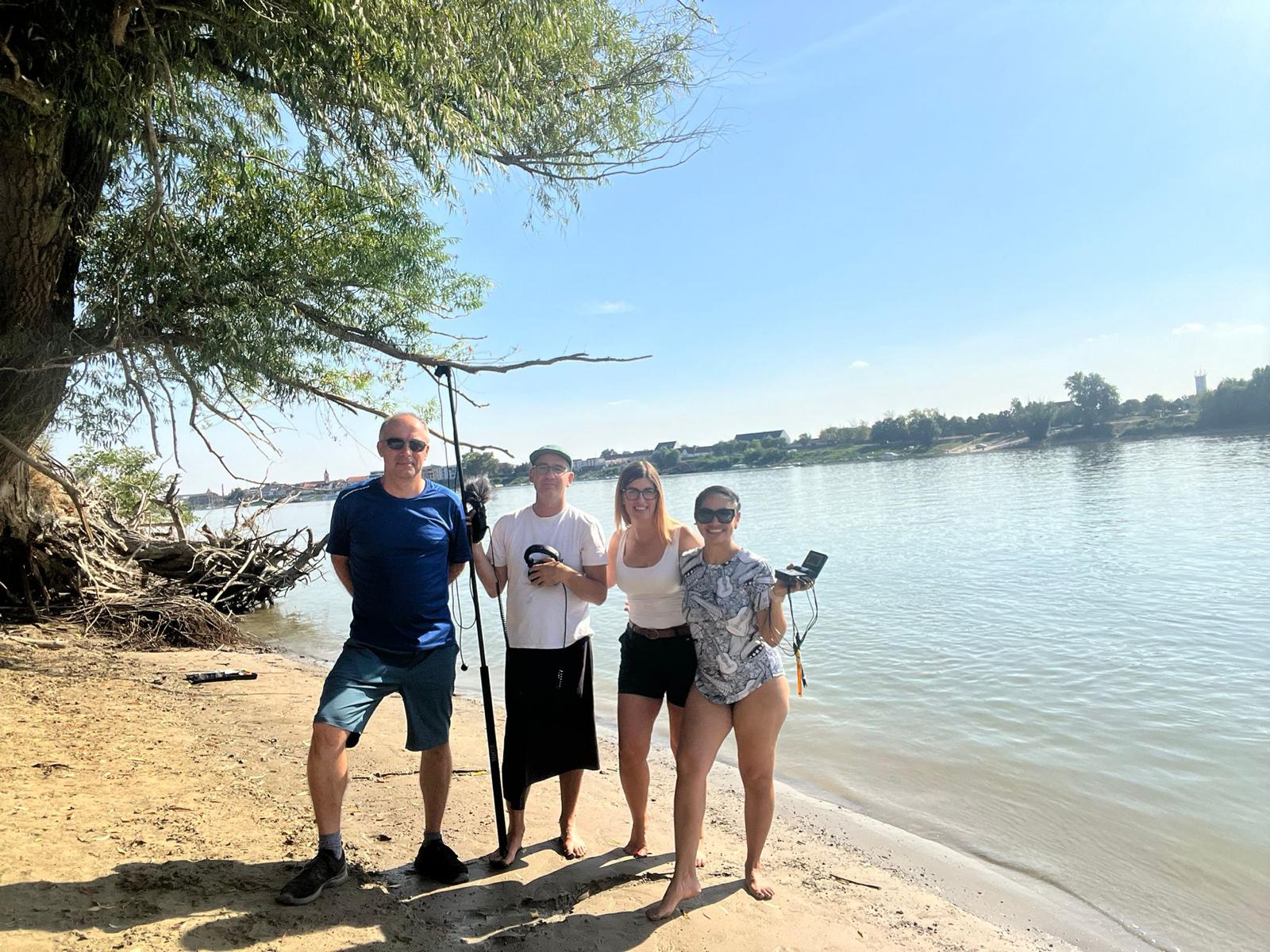Sound and Water Analysis
Small Beach, Mohács, Hungary

Sound Analysis
Date: 04.09.2024
Time: 14.00 hr
Atmospheric Situation
Step into a bright, sun-drenched day where warmth embraces the entire harbor. With clear skies and calm air, this idyllic setting offers a refreshing and inviting experience:
- Golden Sunshine: The sun shines brilliantly, casting vibrant light over the water and illuminating every detail of the harbor.
- A Warm Embrace: The day’s gentle warmth creates a comforting ambiance, perfect for basking in nature’s glow.
- Tranquil Air: With no wind to disturb the peace, the environment feels still and serene, amplifying the sense of relaxation.
Situation

Water Analysis

The water quality of the Danube River in Mohács, at the sampling point Small Beach – P3 reflects a mixture of compliance with the environmental regulations as well as exceedances in certain key parameters, which could indicate localized pollution concerns.. Key parameters such as Temperature (21.5°C), Conductivity (243 µS/cm), TDS (154 ppm), Salinity (107 ppm), pH (7.57), Dissolved Oxygen (9.3 mg/L), Nitrates (1.5 mg-N/L), Nitrites (0.007 mg-N/L), Ammonium (<0.08 mg-N/L), Arsenic (4.4 µg/L), Total Phosphorus (<0.04 mg-P/L), Sodium (11 mg/L), BOD5 (1.2 mg-O2/L), Potassium (2.6 mg/L), Calcium (49.2 mg/L), and Magnesium (12.5 mg/L) are all within the regulatory limits. These findings suggest that the water quality is generally in compliance with EU directives and WHO guidelines, which support aquatic life and human health.
However, several parameters exceed the recommended limits. The Lead concentration (9.3 µg/L) is significantly above the allowable 0.25 µg/L, which could pose a risk to aquatic organisms and human health if not addressed. Similarly, Cadmium (1.7 µg/L) exceeds the limit of 0.05 µg/L, which can have toxic effects on aquatic ecosystems. Copper (16.9 µg/L) is also well above the limit of 1.0 mg/L, which could harm aquatic life. The Total Chromium level (4.6 µg/L) surpasses the threshold of 0.5 µg/L, suggesting potential industrial contamination. Lastly, the Nickel concentration (34.5 µg/L) exceeds the 20 µg/L limit, which could pose risks to the local aquatic environment. These exceedances highlight potential pollution sources and the need for further investigation and mitigation measures.
Note: The concentration limits used in the analysis are based on regulatory standards for surface water and drinking water quality, as outlined in the EU Water Framework Directive (EU WFD) and the EU Drinking Water Directive. These limits ensure aquatic ecosystem health and public safety. The EU directives offer broader standards for surface and drinking water across Europe. Different sources were used to ensure comprehensive comparison and accuracy of the values analyzed.
References:
[1] European Commission. (2018). Directive 2000/60/EC of the European Parliament and of the Council establishing a framework for community action in the field of water policy (Water Framework Directive). Official Journal of the European Union, L 327/1. https://eur-lex.europa.e
[2] European Union. (2008). Directive 2008/105/EC of the European Parliament and of the Council on environmental quality standards in the field of water policy (Environmental Quality Standards Directive). Official Journal of the European Union, L 348/84. https://eur-lex.europa.eu
[3] World Health Organization (WHO). (2017). Guidelines for drinking-water quality: Fourth edition incorporating the first addendum. WHO. https://www.who.int/water_sanitation_health/publications/dwq-guidelines-4th/en
[4] European Union. (1998). Directive 98/83/EC on the quality of water intended for human consumption. Official Journal of the European Union, L 330, 32-54. https://eur-lex.europa.eu/legal-content/EN/TXT/?uri=CELEX%3A31998L0083

